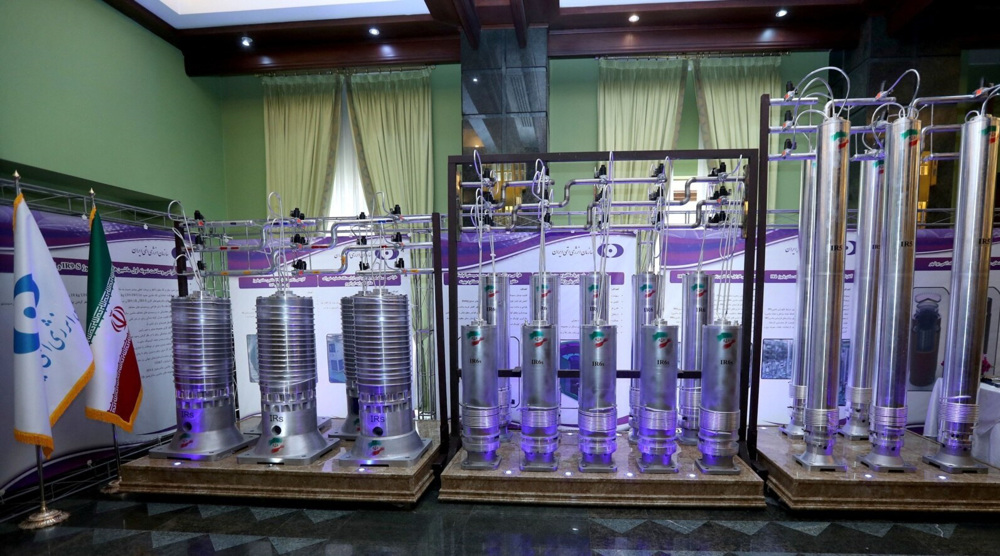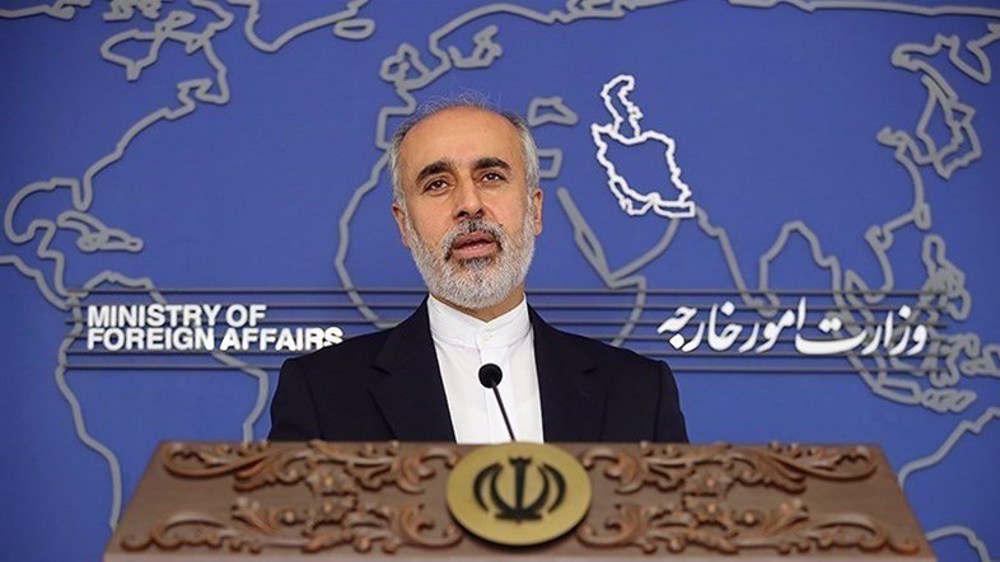Tuesday, 22 November 2022 8:59 AM [ Last Update: Tuesday, 22 November 2022 4:55 PM ]

In this file picture, new-generation Iranian centrifuges are displayed during the National Nuclear Energy Day in Tehran, Iran, on April 10, 2021
Iran has started enriching uranium to the purity level of 60% at its Fordow nuclear facility, following the recent resolution that the US and the European troika initiated at the UN nuclear agency’s Board of Governors to mount pressure on the Islamic Republic.
Tehran has informed the International Atomic Energy Agency (IAEA) of its decision via a letter. It described the move as a strong message to the recent anti-Iran resolution passed by the IAEA’s Board of Governors.
Iran also installed two new IR2M and IR4 cascades at Natanz facility, which have now reached the stage prior to the injection of uranium gas into centrifuges. This means that Iran has practically imitated uranium enrichment by means of the new cascades, and the process will finish within the next few days.

IAEA anti-Iran resolution politically-motivated, meant to damage Tehran-agency ties: FM spokesman
Iran says the “politically-motivated” anti-Tehran resolution recently adopted by the UN nuclear watchdog comes while the country has “the most transparent” peaceful nuclear program.
Moreover, Iran has fitted and launched new centrifuges at two empty halls in Fordow and Natanz nuclear sites, in what is deemed as a decisive response to the resolution against the country.
The halls, under Iran’s commitment to the terms of the landmark 2015 nuclear deal, officially known as the Joint Comprehensive Plan of Action (JCPOA), had been vacant but centrifuges have been installed there once again.
The report went on to point to the replacement of IR1 centrifuges at Fordow with IR6 as Iran’s fourth important move against the IAEA resolution, stressing that the measure will increase enrichment at the site by 10 times.
The latest measures are said to be in line with a law approved by the Iranian Parliament to counter unilateral sanctions imposed by the United States on Tehran.
The Iranian Parliament passed the law – dubbed the Strategic Action Plan to Counter Sanctions – in December 2020, prompting the Iranian administration to restrict the IAEA’s inspections and accelerate the development of the country’s nuclear program beyond the limits set by the JCPOA.

IAEA’s ‘political’ resolution aimed at mounting pressure on Iran: Foreign Ministry spokesman
Iran says a recent IAEA resolution passed at the behest of the US and three European countries pursued political goals.
Iran took five steps in scaling back its obligations, among them abandoning operational limitations on its nuclear industry, including with regard to the capacity and level of uranium enrichment.
All those measures were adopted after informing the IAEA beforehand, with the Agency’s inspectors present on the ground in Iran.
The recent anti-Iran resolution at the Board of Governors, ratified on Thursday, has criticized Iran for what it called a lack of cooperation with the agency. It was put forward by the United States, Britain, France and Germany, in continuation of their political pressures on Iran. Russia and China voted against the motion.





